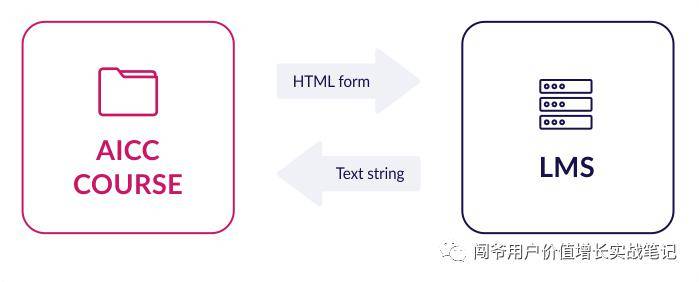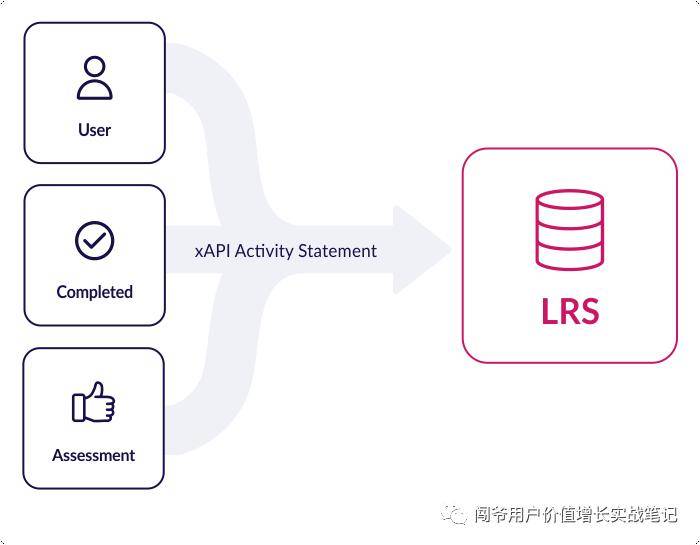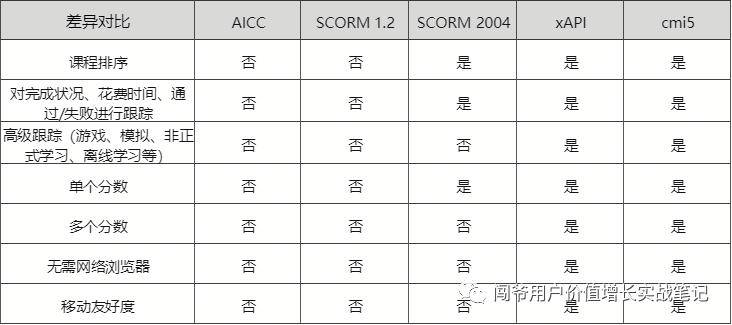 Technology peripherals
Technology peripherals
 AI
AI
 Artificial Intelligence: A revolutionary force transforming education
Artificial Intelligence: A revolutionary force transforming education
Artificial Intelligence: A revolutionary force transforming education
With the continuous development of technology, the fields of online education and digital learning have attracted increasing attention. This article will explore in detail the importance of standards in these areas for successful online education and describe how to implement them. Let’s find out together.
As technology continues to advance, digital learning and online education have become hot topics.
However, when we explore quality online training, what cannot be ignored is the discussion of online learning technology standards. These standards are critical to the success of online education, and this article will explain in detail their importance and how to implement them.
1. Courseware and platform selection: online education course standardization
Standardized online courses are highly portable and can run seamlessly on multiple devices and operating systems to meet the changing needs of users. In addition, this course can also make full use of the rich and diverse multimedia resources on the Internet to improve teaching quality, reduce reliance on traditional teaching materials, and reduce learning costs.
Standardized online learning technology provides efficient and accurate guidance and suggestions through academic tracking services, thereby improving learning efficiency and results. It collects and integrates students' learning behaviors and feedback to provide teachers and students with targeted guidance and suggestions. At the same time, these learning data can also help evaluate and improve deficiencies in the teaching process, providing a reliable basis for future education decisions.
For example, MOOC (Massive Open Online Course) is a massive open online course platform, which has become one of the models of high-quality online education in the Internet era. MOOC courses adopt internationally accepted advanced educational concepts, and are carefully constructed from teaching content, teaching design to teaching methods. This allows students to easily enjoy high-quality educational resources no matter where they are. Through MOOC, students can choose courses that suit them according to their own time and interests, and improve their knowledge and skills without being restricted by geography and time. This flexibility and convenience make MOOC an important tool in modern education, providing students with global educational opportunities.
Standardized online learning technology can significantly improve teaching effects, provide teachers and students with a more efficient interactive environment, and help both parties better achieve learning goals. In addition, diverse teaching methods, such as live video and interactive Q&A, can attract students' attention and significantly improve their learning experience.
2. International standards for online courseware
Ensuring the quality of online learning and standardizing the teaching process is a challenge. In order to meet the needs of diverse students, a standardized online learning system needs to be established. The United States has always been a leader in the formulation of underlying technical standards.
We will discuss several common online learning standards in detail: AICC, SCORM, xAPI and CMI5.
AICCThe full name of the Airline Industry Computer-based Training Committee was established in 1988 by the US aviation industry. The original intention of this standard was to standardize pilot training materials to ensure the safety and reliability of air transportation. However, because it mainly focuses on the aviation field and lacks coverage of knowledge and skills in other fields, it is insufficient for the online learning needs in the mobile Internet era.
3. SCORM, the most widely used online learning technology standard 
4. XAPI, the new online learning standard in the mobile Internet era
XAPI originated from the Advanced Distributed Learning (ADL) in the United States. Since it was put into use in 2013, it has gradually emerged. Compared with past standards, XAPI has shifted its focus from pure online resource sharing to students' actual experience and learning process, including classroom participation, interaction efficiency and other dimensions. Its core is to provide a more detailed and comprehensive perspective to deeply understand students' learning process, complementing new real-time and situational learning methods.
5. The latest online learning standard CMI5 
CMI5, the full name of "Constructed Methods Interoperability V5", is one of the internationally recognized online learning standards. Compared with the above three major standards, CMI5 pays more attention to the individual differences and personalized needs of students. This standard is based on the latest teaching theory and practical experience and can better promote students' self-regulation and growth. Although CMI5 came out in 2015, its popularity in the domestic market still needs to be improved.

6. Comparison of differences between AICC, SCORM, xAPI and CMI5
First, let’s take a look at the differences between AICC and SCORM. AICC is a standard that started in the 1980s. The standard is too old and can no longer meet the current equipment and platforms; while SCORM is relatively new. Its main goal is to ensure the consistency of learning interactive experience, while achieving interactive tracking and result analysis, SCORM’s courseware format should be the most widely used standard format at present.
Secondly, xAPI will soon replace SCORM and become the new mainstream industry standard, and will be backward compatible with SCORM. This new standard aims at greater flexibility and scalability. In the new online learning environment, more applications may appear in the future. In contrast, SCORM has been used and proven in practice for many years and can provide users with stable and reliable service support.
Furthermore, let’s discuss how CMI5 differs from previous standards. CMI5 stands for "Learning Outcome Evaluation Model" and pays more attention to the user's learning process and its result identification. Within the CMI5 framework system, it has become possible to build a more scientific and comprehensive learning evaluation mechanism. Based on this, we can better grasp students' learning status and ability level, and then effectively guide the development of learning activities and improve teaching effects.
Take recording learning as an example:
- AICC:The courseware itself does not collect data and only records scores; for example, Zhang San scored 60 points
- SCORM: Have simple behavior records. For example: Zhang San – completed the PS course – scored 60”
- XAPI&CMI5: Completely record the learning processFor example, "Zhang San completed the PS course with a score of 60 points from the beginning of the course. How long did the video study last during the learning process? How many times did he repeat the study of which knowledge point?" , how many times have you practiced the knowledge points and exercises, which knowledge points have you not mastered, and what is the overall exam passing rate...

In a relatively detailed analysis of the four technical specifications of AICC, SCORM, xAPI, and cmi5, it is not difficult to find that although these technologies have their own uniqueness in development stages, functional characteristics, and application fields, overall, Their purpose is to provide users with a better mobile learning experience, further promote the construction of educational informatization, and take improving learning outcomes as the ultimate goal. Next, I will conduct an in-depth discussion of “immersive learning”.
The above is my personal thinking and practice at work. Everyone is welcome to discuss it together.
This article was originally published by @chuangye on Everyone is a product manager. Reprinting without permission is prohibited
The title picture comes from Unsplash, based on the CC0 protocol
The above is the detailed content of Artificial Intelligence: A revolutionary force transforming education. For more information, please follow other related articles on the PHP Chinese website!

Hot AI Tools

Undresser.AI Undress
AI-powered app for creating realistic nude photos

AI Clothes Remover
Online AI tool for removing clothes from photos.

Undress AI Tool
Undress images for free

Clothoff.io
AI clothes remover

AI Hentai Generator
Generate AI Hentai for free.

Hot Article

Hot Tools

Notepad++7.3.1
Easy-to-use and free code editor

SublimeText3 Chinese version
Chinese version, very easy to use

Zend Studio 13.0.1
Powerful PHP integrated development environment

Dreamweaver CS6
Visual web development tools

SublimeText3 Mac version
God-level code editing software (SublimeText3)

Hot Topics
 1378
1378
 52
52
 How to implement file sorting by debian readdir
Apr 13, 2025 am 09:06 AM
How to implement file sorting by debian readdir
Apr 13, 2025 am 09:06 AM
In Debian systems, the readdir function is used to read directory contents, but the order in which it returns is not predefined. To sort files in a directory, you need to read all files first, and then sort them using the qsort function. The following code demonstrates how to sort directory files using readdir and qsort in Debian system: #include#include#include#include#include//Custom comparison function, used for qsortintcompare(constvoid*a,constvoid*b){returnstrcmp(*(
 How to optimize the performance of debian readdir
Apr 13, 2025 am 08:48 AM
How to optimize the performance of debian readdir
Apr 13, 2025 am 08:48 AM
In Debian systems, readdir system calls are used to read directory contents. If its performance is not good, try the following optimization strategy: Simplify the number of directory files: Split large directories into multiple small directories as much as possible, reducing the number of items processed per readdir call. Enable directory content caching: build a cache mechanism, update the cache regularly or when directory content changes, and reduce frequent calls to readdir. Memory caches (such as Memcached or Redis) or local caches (such as files or databases) can be considered. Adopt efficient data structure: If you implement directory traversal by yourself, select more efficient data structures (such as hash tables instead of linear search) to store and access directory information
 How debian readdir integrates with other tools
Apr 13, 2025 am 09:42 AM
How debian readdir integrates with other tools
Apr 13, 2025 am 09:42 AM
The readdir function in the Debian system is a system call used to read directory contents and is often used in C programming. This article will explain how to integrate readdir with other tools to enhance its functionality. Method 1: Combining C language program and pipeline First, write a C program to call the readdir function and output the result: #include#include#include#includeintmain(intargc,char*argv[]){DIR*dir;structdirent*entry;if(argc!=2){
 Debian mail server firewall configuration tips
Apr 13, 2025 am 11:42 AM
Debian mail server firewall configuration tips
Apr 13, 2025 am 11:42 AM
Configuring a Debian mail server's firewall is an important step in ensuring server security. The following are several commonly used firewall configuration methods, including the use of iptables and firewalld. Use iptables to configure firewall to install iptables (if not already installed): sudoapt-getupdatesudoapt-getinstalliptablesView current iptables rules: sudoiptables-L configuration
 How to configure firewall rules for Debian syslog
Apr 13, 2025 am 06:51 AM
How to configure firewall rules for Debian syslog
Apr 13, 2025 am 06:51 AM
This article describes how to configure firewall rules using iptables or ufw in Debian systems and use Syslog to record firewall activities. Method 1: Use iptablesiptables is a powerful command line firewall tool in Debian system. View existing rules: Use the following command to view the current iptables rules: sudoiptables-L-n-v allows specific IP access: For example, allow IP address 192.168.1.100 to access port 80: sudoiptables-AINPUT-ptcp--dport80-s192.16
 How to set the Debian Apache log level
Apr 13, 2025 am 08:33 AM
How to set the Debian Apache log level
Apr 13, 2025 am 08:33 AM
This article describes how to adjust the logging level of the ApacheWeb server in the Debian system. By modifying the configuration file, you can control the verbose level of log information recorded by Apache. Method 1: Modify the main configuration file to locate the configuration file: The configuration file of Apache2.x is usually located in the /etc/apache2/ directory. The file name may be apache2.conf or httpd.conf, depending on your installation method. Edit configuration file: Open configuration file with root permissions using a text editor (such as nano): sudonano/etc/apache2/apache2.conf
 How to learn Debian syslog
Apr 13, 2025 am 11:51 AM
How to learn Debian syslog
Apr 13, 2025 am 11:51 AM
This guide will guide you to learn how to use Syslog in Debian systems. Syslog is a key service in Linux systems for logging system and application log messages. It helps administrators monitor and analyze system activity to quickly identify and resolve problems. 1. Basic knowledge of Syslog The core functions of Syslog include: centrally collecting and managing log messages; supporting multiple log output formats and target locations (such as files or networks); providing real-time log viewing and filtering functions. 2. Install and configure Syslog (using Rsyslog) The Debian system uses Rsyslog by default. You can install it with the following command: sudoaptupdatesud
 How Debian OpenSSL prevents man-in-the-middle attacks
Apr 13, 2025 am 10:30 AM
How Debian OpenSSL prevents man-in-the-middle attacks
Apr 13, 2025 am 10:30 AM
In Debian systems, OpenSSL is an important library for encryption, decryption and certificate management. To prevent a man-in-the-middle attack (MITM), the following measures can be taken: Use HTTPS: Ensure that all network requests use the HTTPS protocol instead of HTTP. HTTPS uses TLS (Transport Layer Security Protocol) to encrypt communication data to ensure that the data is not stolen or tampered during transmission. Verify server certificate: Manually verify the server certificate on the client to ensure it is trustworthy. The server can be manually verified through the delegate method of URLSession



